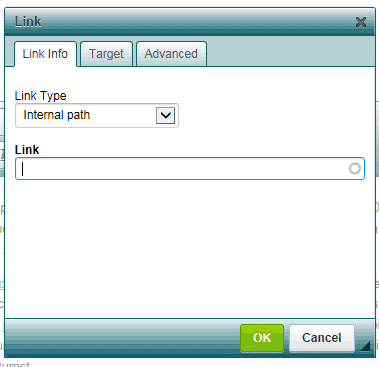Content standards for links
All links
- Write descriptive link text so that a user knows what will happen, or where they will go if they select a link. For example, 'Read about links in our style guide'.
- Do not write 'click here' or 'more'. This is not good for accessibility or search engine optimisation.
- Do not paste long links directly into your content.
External links
If it’s an external link to a different website, make that clear in the link text. For example, 'find out more about studying a foreign language at our Language Centre'.
Avoid opening links in a new tab or window. It can be disorienting, especially for people who have difficulty perceiving visual content.
You can open links in a new tab if the user needs to complete a task on the original web page. For example, fill in a form. If you need a link to open in a new tab, include the words ‘opens in new tab’ as part of the link.
Email address
Write email addresses in lower case, for example, name.surname@cam.ac.uk. You should not need to underline email addresses or URLs.
Links to documents and files
Include the file format and size in brackets at the end of the link. For example, Application form (PDF, 19.5KB)
How to add links
You can add links to:
Linking to a web page
There are 2 kinds of links: internal and external.
Internal links point to a webpage within your Drupal website. External links point to other websites
To add either, highlight the link text and select the Link icon
The Link dialogue box opens with the Link Info tab fields. The dropdown list under Link Type includes:
- Internal Path
- URL
- Anchor
To link to an external page, make sure you change the link Type to URL. Enter the URL and select 'OK'.
To link to an internal page on your site, select Internal Path as the Link Type and type the title of the page in the Link field. Drupal will help you by displaying all pages that include the provided keyword in the file name. Select the correct one, then select 'OK'.
Linking to an email address
For an email link, select the email type in the dropdown list. Enter the email address.
An email link will open the user’s email client, if it has been set up in the user’s browser.
Linking to documents (pdf, Word, etc.)
We recommend that you avoid using PDFs unless they contain legal or regulatory information that you cannot easily present on a web page.
First you will need to upload your document. Any files that you upload must be accessible. Find out more about creating accessible PDFs in our uploading files instructions.
Once the file is uploaded, you can create a link pointing to it.
Go to the page where the link should appear. Change to the edit mode. Highlight the link text and click the Link icon.
Make sure that the 'Internal path' is selected and provide the path underneath. It should be in the following format:
/files/ followed by the name of your file, full stop and extension. For example: /files/structure.pdf
Please note it is /files/ and not /file/
Select 'OK' to save the link.
Watch the video - Linking to documents
If you want to replace a document with a newer version, delete the existing version. Then upload the new version with the same file name.
Removing Links
To remove an existing link, highlight the text and click the Unlink button in the toolbar.
Get help
If you need help with your Drupal website, contact the Drupal team via webmaster@admin.cam.ac.uk.
Content editors around the University can get guidance and advice from the Content Community.


